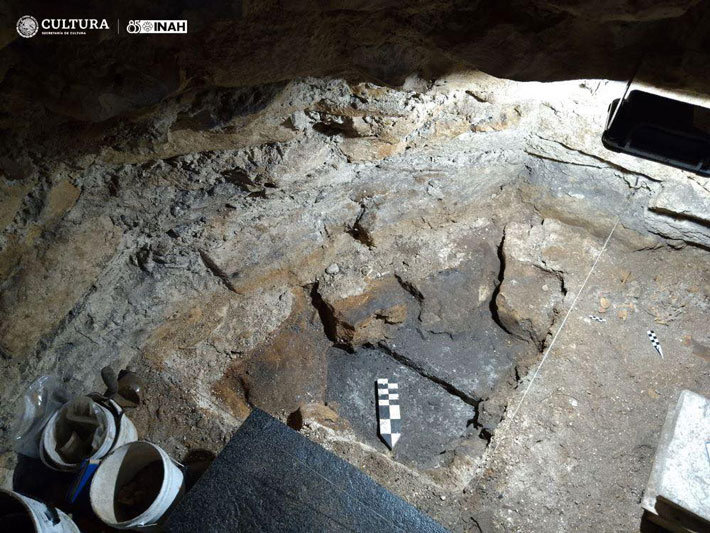 QUINTANA ROO, MEXICO—Mexico News Daily reports that a bottle-shaped chultún, a structure usually used by the Maya to catch rainwater, has been discovered in the floor of a cave by researchers from Mexico’s National Institute of Anthropology and History (INAH). The cave is located within Tulum National Park, the site of a walled Maya city situated on the Yucatán Peninsula’s Caribbean coastline. Archaeologist Enrique Marín Vázquez said that the chultún measures more than eight feet in diameter and is almost eight feet deep. On the surface of the soil, he and his team members found a thin layer of ground coral. Underneath the coral, they uncovered a layer of reddish clay atop layers of medium-sized stones and ash. The final layer of the chultún was made up of human bones and burned stones. It may have been constructed at about the time Tulum was first occupied, between about A.D. 1250 and 1521, he explained. Two similar structures found outside the cave were likely used to catch rainwater, but this chultún may have initially been constructed inside as a storehouse for food and plants. The researchers suggest, however, that it was later used in rituals, perhaps related to the human burials that have also been discovered in the cave. To read about the role of women in Maya politics, go to "Jungle Realm of the Snake Queens."
QUINTANA ROO, MEXICO—Mexico News Daily reports that a bottle-shaped chultún, a structure usually used by the Maya to catch rainwater, has been discovered in the floor of a cave by researchers from Mexico’s National Institute of Anthropology and History (INAH). The cave is located within Tulum National Park, the site of a walled Maya city situated on the Yucatán Peninsula’s Caribbean coastline. Archaeologist Enrique Marín Vázquez said that the chultún measures more than eight feet in diameter and is almost eight feet deep. On the surface of the soil, he and his team members found a thin layer of ground coral. Underneath the coral, they uncovered a layer of reddish clay atop layers of medium-sized stones and ash. The final layer of the chultún was made up of human bones and burned stones. It may have been constructed at about the time Tulum was first occupied, between about A.D. 1250 and 1521, he explained. Two similar structures found outside the cave were likely used to catch rainwater, but this chultún may have initially been constructed inside as a storehouse for food and plants. The researchers suggest, however, that it was later used in rituals, perhaps related to the human burials that have also been discovered in the cave. To read about the role of women in Maya politics, go to "Jungle Realm of the Snake Queens."
Unusual Maya Storage Pit Discovered in Tulum Cave
